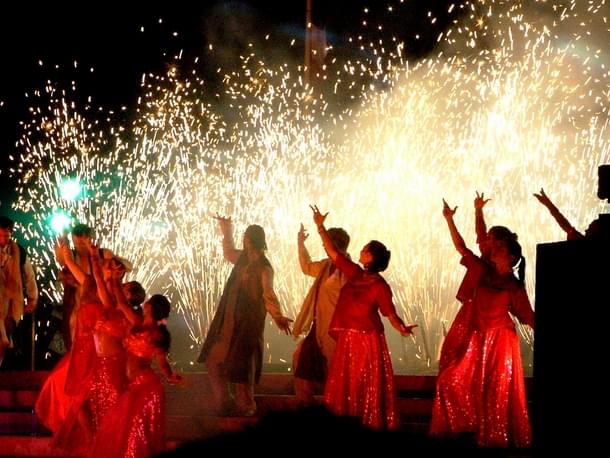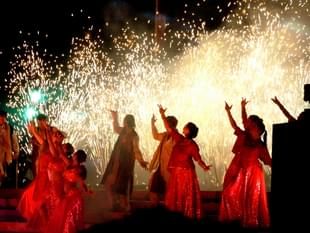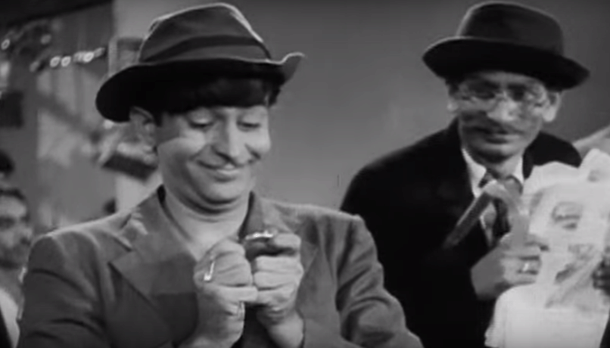Culture
How India Can Counter The Chinese Confucius Institutes
Sriram Chadalavada
Oct 13, 2015, 09:59 PM | Updated Feb 11, 2016, 08:56 AM IST
Save & read from anywhere!
Bookmark stories for easy access on any device or the Swarajya app.


India’s cultural capital is enough and more to not let Chinese Confucius institutes win the soft-power game. But, can we use it in the proper manner?
Confucius Institutes are the Chinese equivalents of Germany’s Goethe Institute, France’s Alliance Française, and Britain’s British Council. Unlike these organizations, Confucius institutes operate within established universities, colleges and secondary schools in host countries, where they provide funding, teachers, and educational materials. For example, in India, there are two Confucius institutes at the University of Mumbai and Vellore Institute of Technology.
Confucius Institutes (CIs) promote and teach Chinese culture and language around the world. CIs develop Chinese language courses, train teachers, hold the HSK Examination (Chinese proficiency test), and provide information about contemporary China. The director of the CI program, Xu Lin, stated that CIs were started to cater to the sudden uptick in interest of the Chinese language around the world.
Confucius institutes are allegedly China’s way to project its soft power in the guise of teaching Chinese language and culture expanding China’s economic, cultural, and diplomatic reach. Experts say that one important goal of such institutes also is to influence host countries’ view of China. For example, Tibet and Taiwan are taboo and the official One China policy is promoted.
Considering their potential to influence intellectuals to a pro-Chinese view as pointed out by Minister Rajyavardhan Rathore, India needs to have a strategy to counter their presence especially in neighbors such as Nepal.
India’s ancient cultural export to the world, incidentally also to China, was Buddhism. The Modi government has taken several initiatives to revive those links in several countries. The outreach to re-establish Buddhist pilgrimages and the Nalanda university are prime examples of such efforts.
From the modern era, India already has another huge ace in the pack to showcase her culture in any soft power sense: Indian cinema including Bollywood. Already popular across countries with established Indian diaspora, Indian cinema of all languages has had fans since the days of Raj Kapoor singing Aawara Hoon. This author personally experienced kind treatment and great customer service from the people of central Asia just based on their memory of that song. It was an awesome demonstration of Indian cinema’s intergenerational and transnational appeal.

Indian cinema (from ALL languages with subtitles in host languages) must have primary status in soft power strategy due to its immensity of reach and volume of people that it can influence. For example, PK was released in US, Canada, Australia, New Zealand, Malaysia, UK and Ireland and even in China. It was a tremendous global success and opened up the movie market for Indian cinema even inside China. Recently, Bajrangi Bhaaijaan has continued the trend And the film industry awaits with bated breath if Baahubali can continue its record-breaking success overseas.
If Indian culture and languages have to be taught and propagated in other countries, its cinema will be the best avenue given the inherent diversity of our polyglot movie industry. With closed captioning in English or native language of the country where Indian soft power centers will be present, it will be a proactive response that will build on India’s strengths and create a strong front against Confucius Institutes.
Confucius institutes in many Western universities have faced opposition for trying to surreptitiously act as a front for the Communist party views on Taiwan and Tibet and subverting the academic freedom of those universities. In contrast, Indian cinema (with songs, emphasis on family) from our multiple language industries will be trusted as the creative expression of democratic freedom. This way the goals of the Indian state in having flourishing centers of Indian culture overseas will also enmesh in promoting our awesome film industry enabling them to attract newer audiences and create larger export markets.
Imagine videos or shows of Ranbir Kapoor eliciting nostalgia with the evergreen Aawara Hoon or Mera Joota Hai Jaapani carrying forward his grandfather’s legacy in the former Soviet Union!
Soft power projection can also be accomplished by means of artists of traditional and modern Indian dance, music, and artforms to co-create with artists of host nations. For example, Jaaga in Bengaluru in the past carried out many artistic projects with Goethe Institute of Germany.
Finally, soft power can serve as a conduit for Indian alternative medical care from systems such as Ayurveda, Siddha, Unani that have been proved by scientific evidence-based research. This would be similar to the Chopra Institute in the US conducting research on treating Arthritis using Ayurveda or AIIMS research on the beneficial effects of Art of Living Sudarshanakriya.
Imagine having such clinics around the world as outposts of Indian scientific research springing from its ancient traditions serving mankind across the world.
To conclude, by leveraging her strengths of cinema, music and traditional medicine, India can both expand the presence of her culture internationally, establish a Pax Cultural Indica, and meet the challenge posed by Confucius Institutes.





